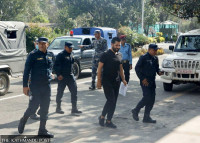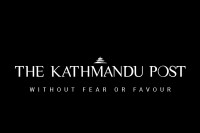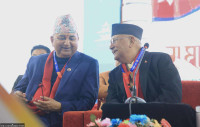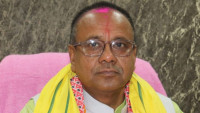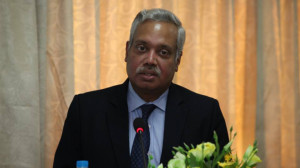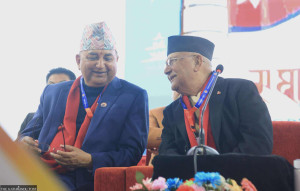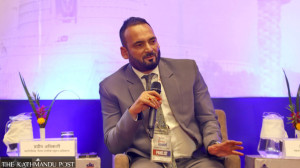National
Government task force says Nepal needs 1.5 million jobs to avoid unemployment crisis
The government has set the target of creating only 700,000 jobs over the next fiscal year..jpg&w=900&height=601)
Prithvi Man Shrestha
A task force formed to study the impact of Covid-19 on foreign employment sector and the economy has said that the country needs to create 1.5 million jobs, more than double the target set by the government, to avoid an imminent unemployment crisis.
With the Covid-19 pandemic affecting the global workforce, tens of thousands of Nepali migrant workers based in various labour destination countries are expected to return home while many people within the country are also likely to be put out of their jobs.
The government has announced plans to create 700,000 jobs in the fiscal year 2020-21. But the government’s own task force has now suggested that the announced job target is not going to be enough to employ the workforce at home and those expected to return from abroad.
“Our estimate is that we need to create 1.5 million jobs to accommodate the new workforce that joins the labour market every year, those who were planning to go abroad for jobs but were unable to because of the pandemic, and the people who lost their jobs at home and abroad,” said Ram Kumar Phuyal, coordinator of the task force and also a member of the National Planning Commission.
According to the task force, around 700,000 Nepali migrant workers are estimated to return from overseas over the next year alone.
“Around 300,000 people are estimated to arrive from India and the remaining from other key labour destinations,” said Phuyal.
The task force has said that around 225,000 people are likely to return in the immediate future.
The government plans to create employment through various existing programmes, like the Prime Minister Employment Programme, as well as new ones.
“If the situation gets normal, the government could create more than 700,000 under its programmes,” said Phuyal while suggesting that the government double up its efforts to engage the other 700,000 people.
Earlier, a separate task force formed by the Ministry of Industry, Commerce and Supplies had also suggested the government the ways of creating over 2.5 million jobs over the next four-five years.
It had proposed restructuring and expanding various government programmes and proposed some new ones, which require a massive government investment.
The latest task force has said that the government needs to create 1.5 million jobs in a year, raising the sense of urgency about job creation.
Experts say creating so many jobs in a year is going to be a herculean task.
Shankar Sharma, former vice-chairman of the National Planning Commission, said the government would struggle creating 700,000 new jobs in a year, let alone 1.5 million.
“The government plans to create more employment through skill trainings for Nepali youths, but there is a question about the quality of these trainings,” Sharma said. “Then there is uncertainty about the coronavirus itself. As Covid-19 continues to spread in Nepal, it is uncertain when the jobs proposed by the government will be ready for the intake of unemployed people.”
Finance Minister Yubaraj Khatiwada has repeatedly said that the country could use the domestic workforce to replace foreign workers involved in the construction and industry sectors.
Nepal has an estimated 700,000 foreign workers involved in various sectors.
“There is a huge scope for Nepalis replacing the foreign workers who have returned to their home countries amid the pandemic and are not expected to come back anytime soon,” Phuyal said.
Still, the replacement recruitment plan is not going to address the problem of unemployment. Moreover, there is no certainty that the replacement recruits will be adept at their assigned jobs.
“Without launching quality skill training for Nepali workers, it will be hard for Neaplis to replace the foreign workers inside the country,” Sharma said.




 11.12°C Kathmandu
11.12°C Kathmandu
